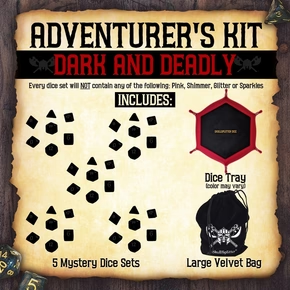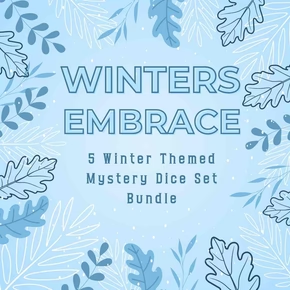
Lizardfolk 5E
Sharp Teeth and Cold Intellect
The lizardfolk dwell within sweltering jungles and deep ancient swamps. Simply a monster for most of D&D history, the lizardfolk have been elevated to player race so that new players can experience role-playing through their alien reptilian minds. Playing a lizardfolk means seeing the world differently, seeing humanity differently, and adventuring alongside a pack of weak smooth skins. Roleplaying a lizardfolk can be a real treat, and a stretch of your acting muscles. Follow us through the dense underbrush and be ready for anything as we go through everything you need to know.
Table of Contents:
Lizardfolk Culture
Most lizardfolk live a savage existence. They form small tribes in wetlands, swamps and sometimes deep in otherwise untouched jungles. They’re rarely the sociable type, and that whole “monster” label is pretty appropriate most of the time. They prioritize survival above everything else, and other races are usually just considered “assets” or “resources”. Lizardfolk aren’t evil or stupid, they simply have a distinctly reptilian view of the world.
Lizardfolk don’t tend to have lofty aspirations, evil schemes, or any real plans beyond surviving the next season. A lizardfolk tribe might end up serving a priest to an evil god, or become enslaved by a local draconic tyrant, but all they really want is to survive and be left alone. Their allegiance is to themselves first, their tribe second, and to whatever promises the wellbeing of the first two.
Lizardfolk aren’t exactly emotionless, it just seems like that to us warm-blooded squishy folk. They experience fear when a monster shows up, anger against a foe, fondness for a family member, Etc. It’s just that they take those emotions as a static input, rather than feeling an emotion. Instead they take those feelings like a list of variables, feelings to them are no different than their other senses and feeling sadness is no different than feeling hungry. They may go to great lengths to save an ally, but they won’t be broken up afterwards if they fail. Lizardfolk can learn to internalize these emotions from non-lizardfolk, but it’s like learning a foreign language.
Lizardfolk Appearance


Image designed by https://www.sketchgoblin.co.nz/
It has remained a strong trend with 5e playable races to under-describe their appearance. In fact nowhere in the 5e lizardfolk section in Volo’s Guide to Monsters does it even really provide a description beyond “like a lizard”. This may seem like an oversight but it’s not, it’s a feature. You know what lizards look like, what kind of lizard do you want your new character to be? Do you want him sleek and colorful like a gecko? How about thickly scaled and bulky like a monitor lizard? You could have the long snout and ridged tail of a crocodile, or the bright bumpy orange and black skin of a Gila monster. See, skipping out on that description section lets you fill in those gaps with anything and everything you can think of, so long as you meet the minimum requirements of a “lizard”. Be a throwback barbarian that looks like a dinosaur, or a bard with a big neck frill you work into your performances. Be a cranky little horny toad or a great big friendly iguana.
If you’re still having trouble, do a quick google image search on the word “lizard” and see what looks appealing to you. Or try going through it bit by bit. What color is your lizardfolk? Most lizards are earthy greens and browns, but you could also have bright and exotic color patterns. Does your character have frills on his head or neck? How about horns? Are your scales small and smooth, or are they rough or even spikey? “Lizard” is a big canvas with 90% of the work done, it’s up to you now to figure out those last important details that will make your new lizardfolk character utterly yours.
Lizardfolk Names
Lizardfolk have Draconic names, but they use very simple descriptive words for themselves. Usually they relate to a notable deed or action, and they can change many times throughout a lizardfolk’s life. Often, they relate to the lizardfolk’s hunting style, simple description, or a strong foe they managed to vanquish. Their names have no gender, and though their meanings are often simple draconic is a complex language and the words are often long. The following names are followed by their translations from Draconic in parentheses:
Lizardfolk Names: Anqu-Svent (Goblin Killer), Charir (Red), Darastrix (Dragon), Ghontix-Riyit (Tricker of Ogres), Harroc (Hunter), Iblink (Hawk), Ixen (Fire), Korinth (Rage), Kornari (Heart), Maekrix (Leader), Ner (Spear), Osear (Horn), Sonea-Vemcini (Giant Eater).
Lizardfolk Traits
Your lizardfolk character has the following racial traits.
Ability Score Increase: Your Constitution score increases by 2, and your Wisdom score increases by 1.
Age: Lizardfolk reach maturity around age 14 and rarely live longer than 60 years.
Alignment: Most lizardfolk are neutral. They see the world as a place of predators and prey, where life and death are natural processes. They wish only to survive, and prefer to leave other creatures to their own devices.
Size: Lizardfolk are a little bulkier and taller than humans, and their colorful frills make them appear even larger. Your size is Medium.
Speed: Your base walking speed is 30 feet, and you have a swimming speed of 30 feet.
Bite: Your fanged maw is a natural weapon, which you can use to make unarmed strikes. If you hit with it, you deal piercing damage equal to 1d6 + your Strength modifier, instead of the bludgeoning damage normal for an unarmed strike.
Cunning Artisan: As part of a short rest, you can harvest bone and hide from a slain beast, construct, dragon, monstrosity, or plant creature of size Small or larger to create one of the following items: a shield, a club, a javelin, or 1d4 darts or blowgun needles. To use this trait, you need a blade, such as a dagger, or appropriate artisan’s tools, such as leatherworker’s tools.
Hold Breath: You can hold your breath for up to 15 minutes at a time.
Hunter’s Lore: You gain proficiency with two of the following skills of your choice: Animal Handling, Nature, Perception, Stealth, and Survival.
Natural Armor: You have tough, scaly skin. When you aren’t wearing armor, your AC is 13 + your Dexterity modifier. You can use your natural armor to determine your AC if the armor you wear would leave you with a lower AC. A shield’s benefits apply as normal while you use your natural armor.
Hungry Jaws: In battle, you can throw yourself into a vicious feeding frenzy. As a bonus action, you can make a special attack with your bite. If the attack hits, it deals its normal damage, and you gain temporary hit points (minimum of 1) equal to your Constitution modifier, and you can’t use this trait again until you finish a short or long rest.
Languages: You can speak, read, and write Common and Draconic.
With all that dumped on you, let’s actually go through each of these abilities and what they mean for your new character.
Ability Score Increase: +2 to Constitution and +1 to Wisdom is a very versatile boost. Constitution is good for literally any class (particularly martial classes) but the classes that will get the most benefit from Wisdom bonus are Clerics, Druids, Monks, and Rangers.
Age: A little on the short side but not likely to come up.
Alignment: Very strongly neutral in at least some aspect, you’ll likely have at least one “N” in your alignment unless you want to play against type.
Size: Medium sized, nothing special, move on.
Speed: Solid 30-foot movement speed and a very welcome 30-foot swim speed. Combined with your hold breath ability you’re practically aquatic and are very at home in the water. Keep that in mind and maybe force your enemy into the drink if you have the opportunity.
Bite: Natural attacks are nice, but rarely useful in 5e. In practically all situations your weapons will be better, but you can do bite attacks while holding other stuff, and of course it’s a weapon you can “sneak” into places like jails. I recommend not trying to build around it but remember it’s there if you run out of other options.
Cunning Artisan: A true “ribbon” ability, it’s wonderfully flavorful but it’s almost never going to matter in your games. Unless you get all your gear stolen from you and you’re dumped into the wilderness, you’re not going to find a good use for this one.
Hold Breath: Alongside your natural swim speed, your lizardfolk is a champ underwater. Holding breath can have other uses too in clouds of poison gas or other breathing hazards. Do keep in mind you need to breath to use verbal components of spells, so if you’re a spellcaster keep watch of what you can and can’t cast underwater.
Hunter’s Lore: Skill proficiencies are a real nice bonus, and you get to choose two from an extremely useful set. Just grab what you need that you didn’t get from your class and background and you’re good to go.
Natural Armor: It’s good, but before you get any wise ideas about lizardfolk monks, in 5e you never stack AC calculations, you just use the best of whatever you’ve got. So, what is it good for? Basically, you’re always going to be wearing the equivalent of a chain shirt, even if your class wouldn’t have armor. If you have access to better armor anyway, it’s useless, but if you’d normally be going around unprotected, this ability is a godsend.
Hungry Jaws: It’s not a lot of damage, and it’s not a lot of healing, but it only uses a bonus action. So once per short rest, your two-handed weapon fighter can get a free bite in and heal a few hit points for their trouble. It’s extremely nice to have, and can save your hide in some situations, use it early and often.
Languages: Common and draconic, draconic gets used surprisingly often so it’s one of the better languages to have in your back pocket.
Lizardfolk Builds

Don’t feel like you have to build your character in a certain way, 5e is great about this and lizardfolk in particular fit well into pretty much any role. If, however, you want to make optimal use of the lizardfolk’s abilities, think of the following builds as good starting points.
Lizard of DEATH
Constitution and Wisdom fit snugly into a cleric’s wheelhouse, the Constitution keeps you alive and the Wisdom powers up your spellcasting. That and the natural armor means you can be a bit beefier in the cleric domains that don’t grant heavy armor proficiency. I really like the death domain for this build, it’s a type of cleric that really wants to get into the thick of things, and your bite attack can be used in conjunction with your touch of death ability.
Leaping Lizard
The Lizardfolk’s natural armor lines up surprisingly well for Dexterity-based fighter builds. Max your Dexterity up to 20 and your nimble Dexterity fighter has the same AC as somebody lumbering around in full plate. Grab the battle master archetype, a rapier and shield or a pair of shortswords, then go to town as you sprint around your enemies.
Gecko Guru
Lizardfolk make amazing druids. Constitution and Wisdom are exactly what they need, and the natural armor ability lets them forget about armor altogether and focus on their other stats. Druids have the “non-metal” restriction and are often stuck with hide armor as their go-to. Lizardfolk’s base natural armor is just strictly better. I especially like the circle of the moon for lizardfolk, as that circle often has AC issues when not in wild shape and lizardfolk solves that problem perfectly.
Lizardfolk 5e FAQs (Frequently Asked Questions)
Do lizardfolk have darkvision in 5e?
While you might reasonably expect them to, lizardfolk in 5e do not have darkvision nor do they have any other such ability-enhancing their ability to see.
Do lizardfolk have surnames?
No. Lizardfolk have very simple and descriptive names in draconic that are typically a single word. They don’t have family names of any kind. They also don’t make any distinction between male or female names. Their single draconic name will either simply represent something about them, or a great deed or victory they’ve accomplished.
How tall are lizardfolk?
While this detail is strangely absent from their racial listing, from other sources we can confirm that lizardfolk average between 6 and 7 feet tall.
How much do lizardfolk weigh?
Also, strangely absent from their racial listing, but lizardfolk weight averages between 200 and 250 lbs.
👉 SHOP LIZARDFOLK MINIATURES HERE!
--
Enjoy this Guide? You May Also Like:
Thinking about other classes? Check out our giant list of D&D 5e Tools and Tips here.
Hungry for Adventure? Your group will love these D&D Game Night Snack Recipes
Need New Dice? Check out our Dungeons and Dragons Dice here.
New to find a D&D Group? Check out our guide on How to Find a D&D Group.
Want to wield two swords like Drizzt? Check out our Two Weapon Fighting 5e Guide!

Disclaimer
Last updated: January 27, 2019
The information contained on www.SkullSplitterDice.com website (the "Service") is for general information purposes only.
www.SkullSplitterDice.com is a participant in the Amazon Services LLC Associates Program, an affiliate advertising program designed to provide a means for sites to earn advertising fees by advertising and linking to Amazon.com. (source: Section 5)
Blueshift Nine, LLC assumes no responsibility for errors or omissions in the contents on the Service.
In no event shall Blueshift Nine, LLC be liable for any special, direct, indirect, consequential, or incidental damages or any damages whatsoever, whether in an action of contract, negligence or other tort, arising out of or in connection with the use of the Service or the contents of the Service. Blueshift Nine, LLC reserves the right to make additions, deletions, or modification to the contents on the Service at any time without prior notice.
Blueshift Nine, LLC does not warrant that the Service is free of viruses or other harmful components.
Affiliate disclaimer
This affiliate disclosure details the affiliate relationships of Blueshift Nine, LLC with other companies and products.
Some of the links are "affiliate links", a link with a special tracking code. This means if you click on an affiliate link and purchase the item, we will receive an affiliate commission.
The price of the item is the same whether it is an affiliate link or not. Regardless, we only recommend products or services we believe will add value to our readers.
By using the affiliate links, you are helping support the Service, and we genuinely appreciate your support.
Affiliate advertising programs that the Service uses are:
- Amazon Services LLC Associates Program
- As an Amazon Associate, I earn from qualifying purchases.
- Blueshift Nine, LLC is a participant in the Amazon Services LLC Associates Program, an affiliate advertising program designed to provide a means for sites to earn advertising fees by advertising and linking to Amazon.com or endless.com, MYHABIT.com, SmallParts.com, or AmazonWireless.com.
- Pages on this Service may include affiliate links to Amazon and its affiliate sites on which the owner of this Service, Blueshift Nine, LLC, will make a referral commission.
